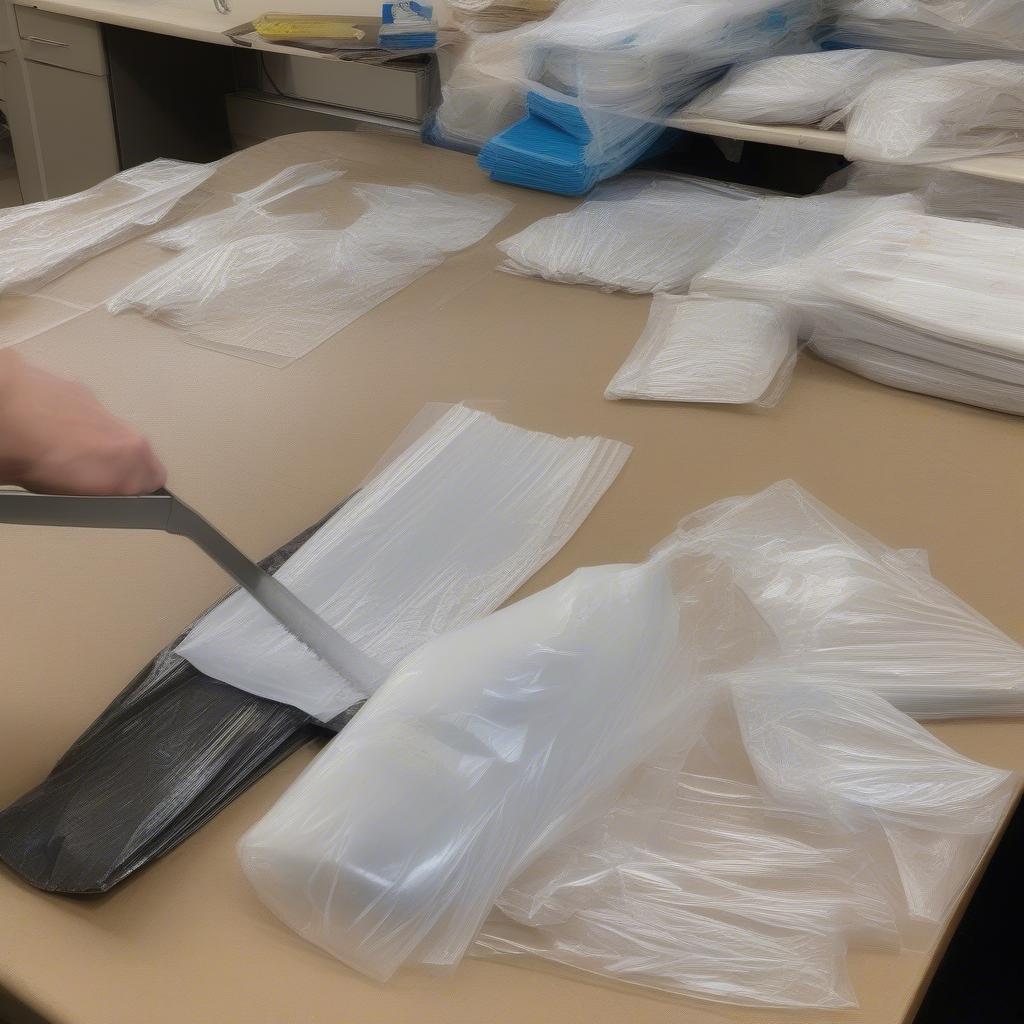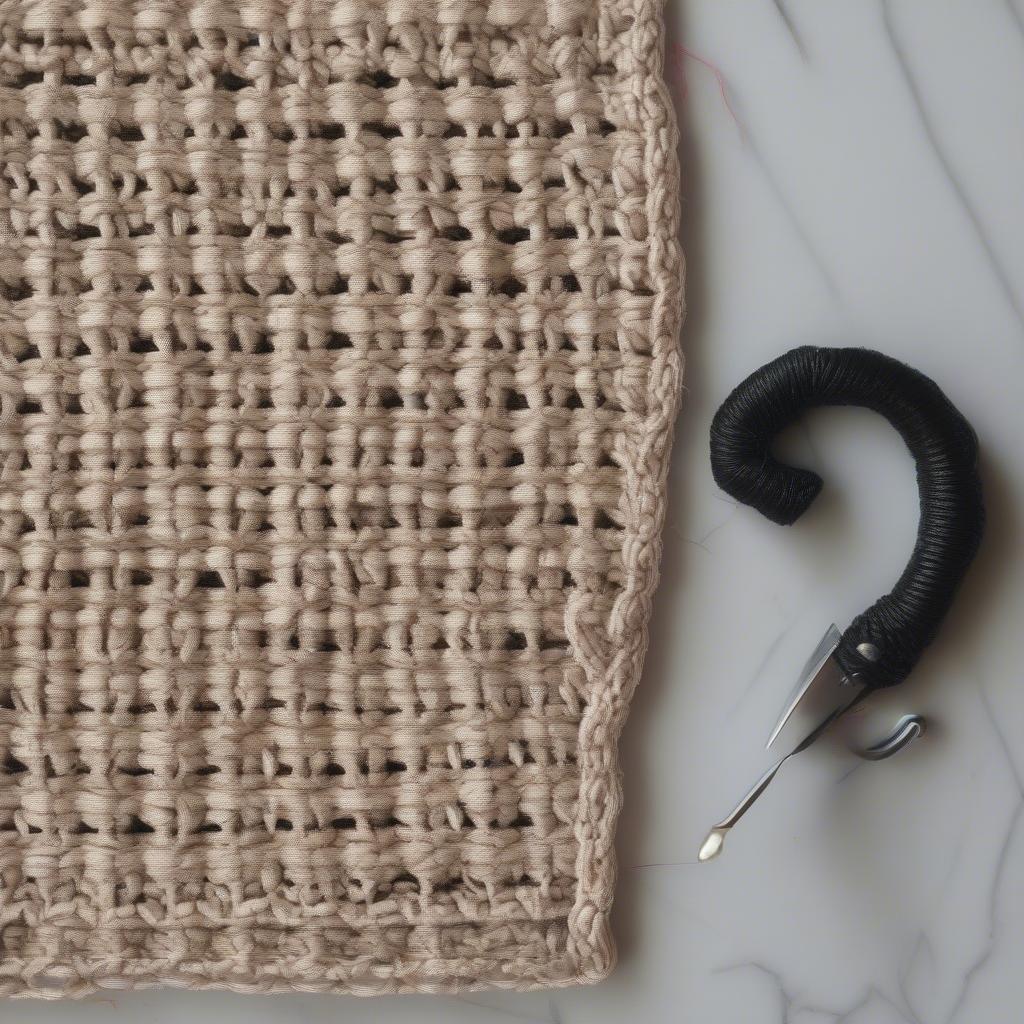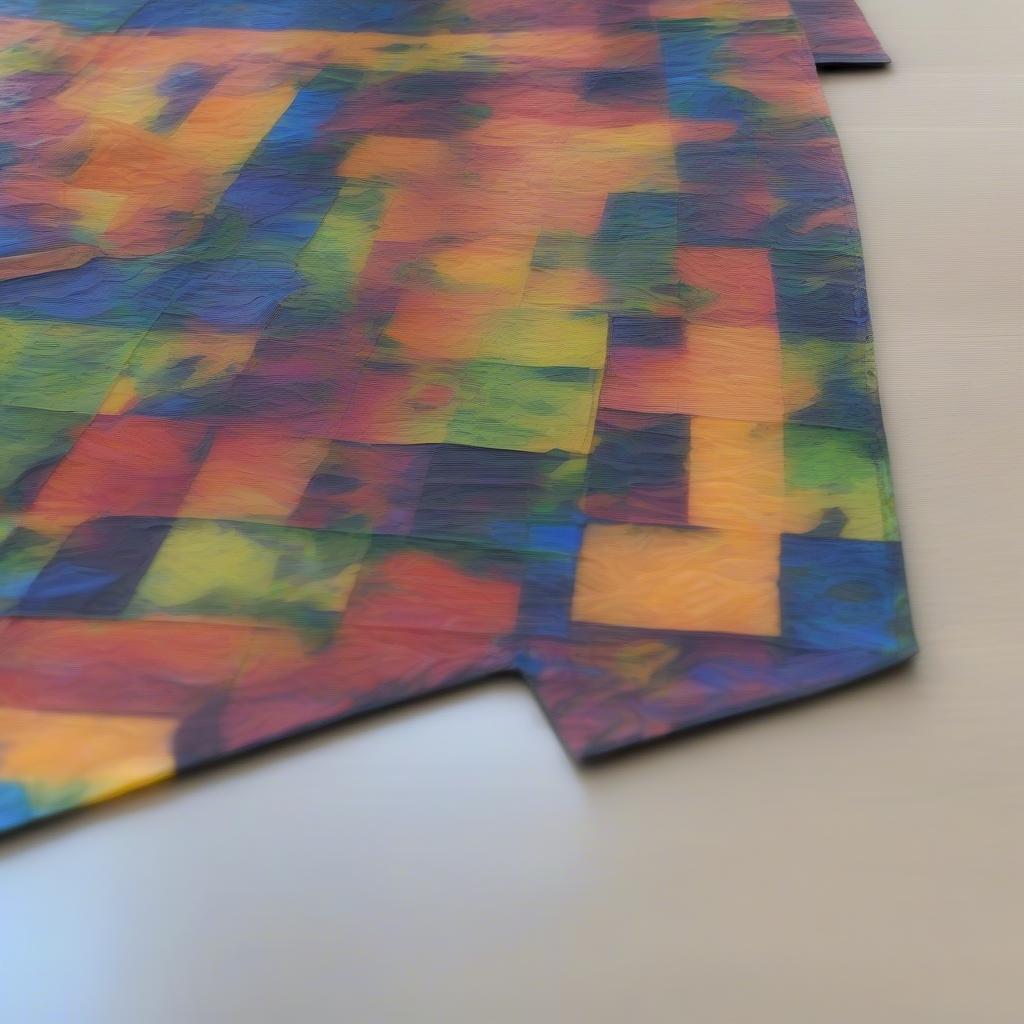Basket Weaving
How to Make a Plastic Bag Mat Without Weaving
Creating a durable and stylish mat from plastic bags doesn’t require traditional weaving techniques. You can achieve fantastic results with simple methods, transforming discarded plastic into something useful and beautiful. This guide will explore several no-weave techniques to help you make a plastic bag mat, turning everyday trash into a treasure.
No-Weave Plastic Bag Mat: A Simple and Sustainable Project
 Preparing plastic bags for a no-weave mat
Preparing plastic bags for a no-weave mat
Creating a plastic bag mat without weaving is an excellent way to recycle and contribute to a more sustainable lifestyle. Plus, the resulting mat is waterproof, durable, and easy to clean. finger weave plastic bags offers an interesting contrast to no-weave methods, but for those seeking a quicker, easier approach, no-weave methods are ideal. There are several ways to achieve this, from knotting and crocheting (which utilizes a hook rather than traditional weaving) to braiding and fusing. Let’s dive into the most popular no-weave techniques.
The Knotting Method: A Rug-Like Result
One of the easiest ways to make a no-weave plastic bag mat is by knotting plastic bag strips together. First, cut your plastic bags into uniform strips. The width of the strips will determine the final texture of your mat. Thicker strips result in a chunkier, rug-like feel.
- Cut plastic shopping bags into strips approximately 1-2 inches wide.
- Tie the strips together end-to-end, creating one long continuous strand.
- Begin knotting the strand. You can use a simple overhand knot, or experiment with more intricate knots.
- Continue knotting until you reach your desired mat size. You can create a circular, square, or rectangular mat depending on how you arrange and knot the plastic strand.
The Crochet Method: A Quick and Customizable Approach
Crocheting with plastic bag yarn (plarn) is another popular no-weave option. twined bags an historic finger-weaving craf shows how diverse woven crafts can be. Plarn creates a surprisingly soft and pliable material, perfect for a comfortable mat.
 Crocheting a plastic bag mat
Crocheting a plastic bag mat
- Create plarn by cutting plastic bags into loops and connecting them.
- Using a crochet hook, create a foundation chain of the desired length.
- Work single crochet stitches across the chain, turning at the end of each row.
- Continue crocheting rows until your mat reaches the desired size.
“Crocheting with plarn is a wonderfully versatile technique,” says Eliza Carter, sustainable crafts expert. “You can control the thickness and texture of the mat by adjusting the width of your plastic strips and the size of your crochet hook.”
The Fusion Method: A Modern and Durable Option
Fusing plastic bags together creates a waterproof and durable mat. This method involves layering plastic bags and applying heat to melt and fuse them together.
- Cut your plastic bags into squares or rectangles.
- Layer the plastic pieces on a heat-resistant surface, like parchment paper.
- Cover the layered plastic with another sheet of parchment paper.
- Iron the top parchment paper with a medium-hot iron. The heat will melt the plastic and fuse the layers together.
- Allow the fused plastic to cool completely before using.
 A fused plastic bag mat
A fused plastic bag mat
Conclusion
Making a plastic bag mat without weaving is a rewarding and eco-conscious craft. Whether you choose knotting, crocheting, or fusing, you’re transforming waste into something beautiful and functional. best basket weaving materials discusses other sustainable materials that you might enjoy working with. So, gather your plastic bags and start creating!
FAQ
-
What type of plastic bags are best for making mats? Any type of plastic bag will work, but thicker bags are generally easier to work with.
-
How do I clean a plastic bag mat? Simply wipe it down with a damp cloth.
-
Can I add color to my mat? Yes! Use colored plastic bags or dye white plarn.
-
How thick should my plastic strips be for knotting? Start with 1-2 inches and adjust based on your desired texture.
-
What is the best hook size for crocheting plarn? A larger hook (size H/8 or larger) typically works best.
-
How can I make sure my fused mat is strong? Use multiple layers of plastic and ensure the iron is hot enough to melt them together thoroughly.
-
Where can I find more inspiration for plastic bag crafts? Check out online tutorials and crafting communities for creative ideas.
“Experimenting with different methods and materials is key to finding the perfect no-weave technique for you,” advises Mateo Diaz, an artisan known for innovative upcycling. “Don’t be afraid to get creative and make it your own!”
packing tool for basket weaving
plastic or metal basket weave form for old used bricks
For further assistance, please contact us at Hanoi, Vietnam or Tech Avenue, Suite 12, San Francisco, CA 94105, USA. We have a 24/7 customer support team.
